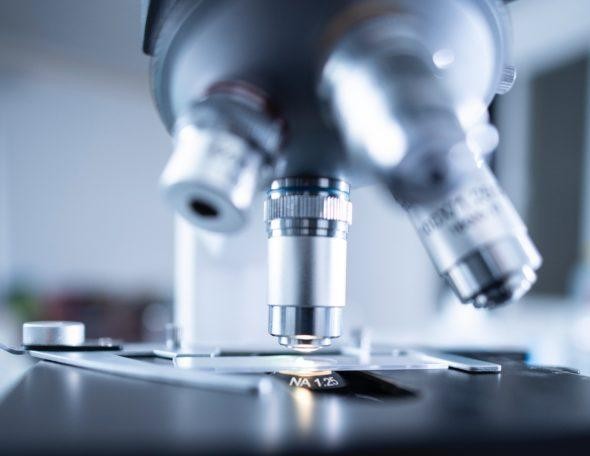
This article was originally published at www.aalto.fi. After the release of the original article, Xfold Imaging has found its first paying customer.
Xfold Imaging’s innovative solutions enable the study of cellular structures and bio-molecules at a nano-scale resolution which has, up until now, not been possible. Looking this deep will give earlier diagnostics to stop disease outbreaks in their tracks, allow pharmaceutical companies to design better drugs.
The company has created what looks like a straightforward piece of glass, but what is actually a powerful signal enhancer that can be incorporated into existing microscopes, thus giving way more power and possibilities than vastly more expensive microscopes.
Xfold Imaging is a spin-out from Aalto University and the University of Helsinki and the idea initially came from co-founder, Naga Subramaniyam, who’s background is in nanoscience and with experience in working with nanofabrication and spectroscopy. As part of his research, he had a co-operation with Biomedicum in Helsinki, so it was only natural to focus on med-tech oriented research.
Xfold offers results that exceed the capabilities of lab equipment that costs millions of euros, for equipment that costs €50 000, with a solution that costs only a couple of hundreds of euros
The glass has been designed as such that it can be utilised on most laboratory microscopes, Xfold’s CEO Timo Jantti, says ‘Our technology, which we call Surface-Enhanced Biomedical Imaging, can create a one hundredfold biomedical image, and without any requirements to upgrade or modernise an existing fleet of equipment.
Previously, to get any meaningful results from cell observation, a process of bleaching has been needed to amplify the cell signal. The main problem is that cell bleaching cuts the life of the cell, so observation time is minimal; getting enough observation time is crucial to determining cell activity, or to chemical reaction testing.
Jantti proudly says, ‘When demonstrating our technology to scientists, the live-cell imaging is something that they love; While you can also see the cell better, you can also see the cell life one hundred times longer as less energy is used due to the cell not being bleached’. This means that diagnostics time could be cut in half, which would potentially save lives at the beginning of an epidemic (at the extreme end of the scale).
“We’re now allowing a Nobel prize winner to be better AFTER winning the prize” – Timo Jantti
With full commercialisation in action, Xfold’s solution will enable researchers to have unprecedented access to identifying totally new things, therefore offering opportunities for breakthroughs in research as well.
While the biomedical sector is the main focus at this stage, Xfold has also been asked to provide solutions for satellites and mobile phone batteries. However, Jantti and Xfold are looking even further ahead, ‘We are constantly developing even more powerful live-cell possibilities so if the imaging level would be raised from 100% to 400%, AI could maybe start processing the information that the human eye can’t see, and who knows what will be discovered?!’.
Article: Mark Fletcher
Published originally: 20.11.2019
Visit at Xfold Imaging’s website.
